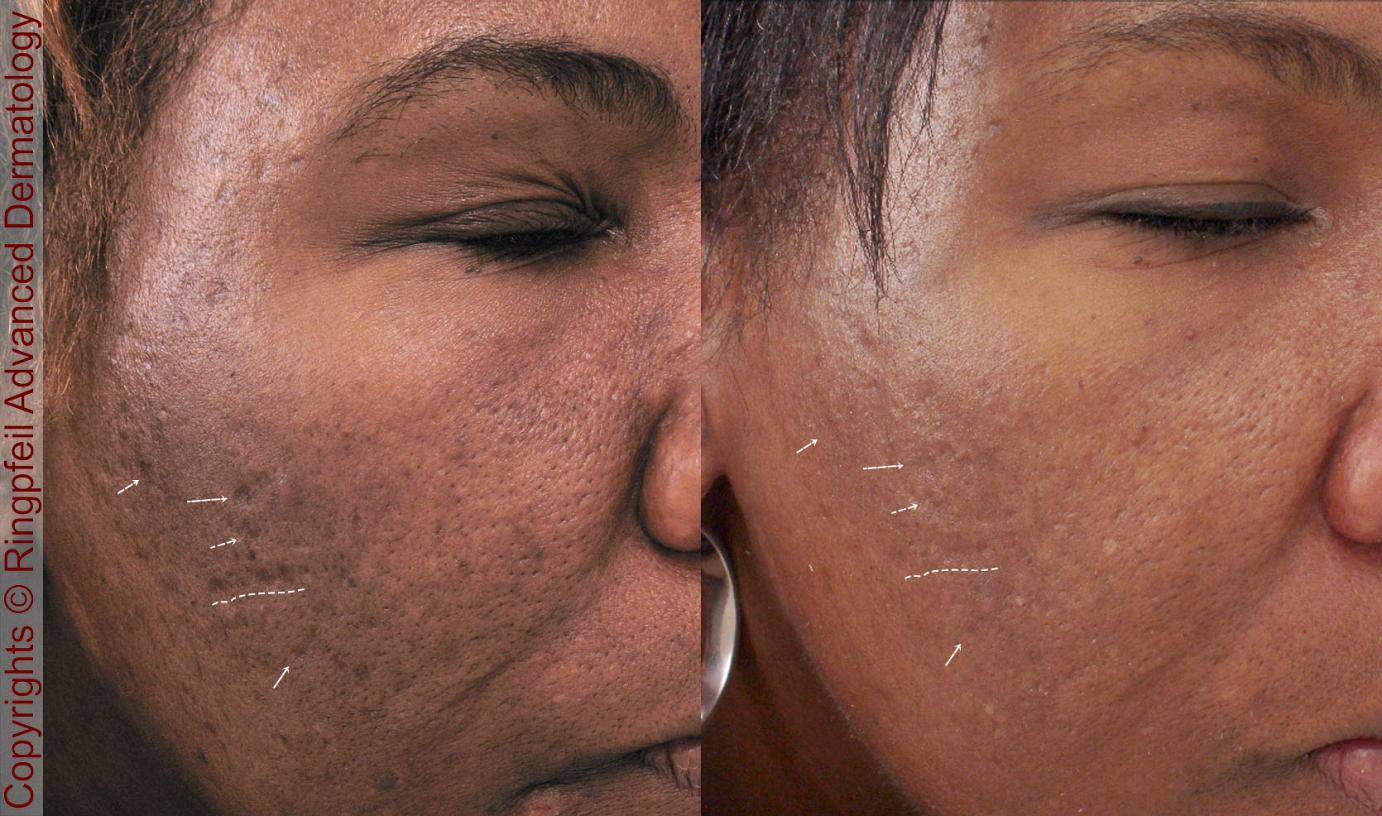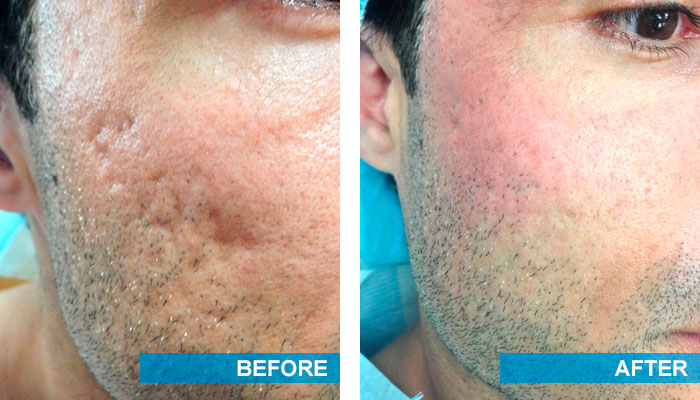Skin Rejuvenation Treatments: The Ultimate Overview to Refreshing Your Skin
Understanding the Different Skin Problem and Effective Treatment Options for Acne Marks
Acne marks stand for a complex interaction of skin disease that substantially impact people' self-confidence and general skin health and wellness. Understanding the unique sorts of acne scars-- atrophic and hypertrophic-- together with their underlying reasons, is crucial for identifying reliable treatment strategies. Different healing options exist, varying from innovative skin-related treatments to natural treatments. The efficiency of these treatments typically hinges on tailored analyses by qualified specialists. As we check out the landscape of acne mark monitoring, it comes to be noticeable that the journey towards clearer skin might include even more than simply topical remedies.
Sorts Of Acne Marks

On the other hand, hypertrophic marks result from an overflow of collagen throughout the healing procedure, resulting in increased areas on the skin. These scars are frequently firm and can differ in shade, in some cases showing up red or darker than the bordering skin.
Understanding these types of acne scars is vital for establishing an efficient therapy plan - acne scars treatment. Alternatives may consist of chemical peels, laser treatment, microneedling, or dermal fillers, tailored to the specific mark type. A detailed consultation with a skin doctor can help establish one of the most ideal treatment, taking into account the person's skin type, scar seriousness, and total skin wellness
Reasons For Acne Scarring
Scarring occurs as an outcome of the body's all-natural healing response to swelling and injury triggered by acne sores. When acne forms, it causes an inflammatory feedback, causing the release of various cytokines and development aspects that advertise recovery. However, this procedure can often result in extreme cells development or poor fixing, leading to marks.
The primary reasons of acne scarring include the extent of the acne itself, duration of the sores, and private skin kinds. Serious inflammatory acne, such as cysts and blemishes, is more most likely to result in scarring due to much deeper cells damages. Additionally, improper handling of acne lesions, such as squeezing or choosing, can intensify tissue injury and swelling, boosting the possibility of scarring.
Genetic tendency also plays a substantial role; individuals with a household history of scarring go to a greater threat. Skin kind and shade can affect mark formation, as darker skin tones may experience post-inflammatory hyperpigmentation, while lighter skin might create atrophic scars.
Eventually, recognizing these causes is crucial in handling acne and reducing the capacity for scarring.

Therapy Options for Scarring
Efficient therapy choices for acne scarring differ relying on the type and intensity of the marks. Normally categorized into atrophic, hypertrophic, and keloid scars, these problems need tailored techniques for optimal outcomes.
For atrophic marks, which are identified by a loss of cells, treatments such as chemical peels, microdermabrasion, and laser therapy are frequently utilized. These methods advertise skin renewal and boost collagen manufacturing, thereby boosting skin structure. Subcision, a minimally intrusive procedure, can additionally work by breaking up coarse bands beneath the skin.
Keloid and hypertrophic marks can be more testing to treat. Choices consist of corticosteroid injections to lower inflammation and squash the scars. Sometimes, cryotherapy or laser treatment might be recommended to decrease their appearance.
Surgical alternatives are offered for serious scarring, where excision or skin grafting may be essential. It's necessary for individuals to consult with a skin specialist to analyze their specific mark type and go over one of the most suitable treatment strategy. Incorporating multiple treatments often produces the very best outcomes, guaranteeing that each individual's unique skin disease is resolved efficiently.
Home Treatments and All-natural Solutions
Natural options and natural home remedy can offer an easily accessible approach for see this site individuals seeking to enhance the appearance of acne marks (acne treatment for sensitive skin). Various active ingredients located in the home kitchen have demonstrated prospective advantages in improving skin appearance and promoting healing

One more effective alternative is lemon juice, which works as a natural exfoliant and can lighten hyperpigmentation. content It must be made use of meticulously, as it might create photosensitivity. Oat meal masks are also useful; their mild exfoliation can aid eliminate dead skin cells while comforting inflammation.
Important oils, such as tea tree oil and lavender oil, can better support mark recovery because of their antimicrobial homes. It is crucial to do a patch test prior to applying any kind of remedy to make sure there are no adverse responses. These natural options can be a corresponding method in the trip to decrease acne marks.
Avoiding Future Scarring
Embracing a proactive strategy to skincare can significantly decrease the threat of developing future acne scars. Routine cleaning, exfoliation, and hydration can aid preserve skin health and stop clogged pores.
Additionally, avoiding the lure to squeeze or choose acne lesions is crucial, as this can bring about swelling and subsequent scarring. Instead, people need to concentrate on applying topical treatments that advertise healing and lower inflammation. Components such as salicylic acid, benzoyl peroxide, and retinoids are known for their efficiency in handling acne and decreasing marks.
Sun defense is one more crucial part; direct exposure to UV rays can dim scars and impede recovery. Making use of a broad-spectrum sunscreen daily can mitigate these impacts.
Lastly, maintaining a healthy and balanced diet abundant in antioxidants and remaining hydrated supports skin regrowth. By carrying out these preventive actions, individuals can significantly decrease their danger of future scarring and promote overall skin health.
Final Thought
In verdict, a comprehensive understanding of acne scars, including both hypertrophic and atrophic kinds, is important for efficient therapy approaches. Consultation with a dermatologist stays critical to devise customized methods that think about private skin kinds and mark severity, ultimately enhancing the efficacy of scar management strategies.
Acne scars represent an intricate interaction of skin problems that substantially impact people' self-esteem and general skin wellness. The 2 key groups of acne scars are hypertrophic and atrophic scars. These scars are further identified right into 3 subtypes: ice pick scars, which are narrow and deep; boxcar have a peek at this website scars, which are wider and have distinct sides; and rolling scars, which create a wave-like look due to unequal skin texture.
A complete assessment with a dermatologist can help establish the most proper intervention, taking right into account the individual's skin kind, scar seriousness, and overall skin wellness.
Examination with a skin specialist continues to be essential to design tailored methods that consider specific skin types and mark intensity, ultimately boosting the efficacy of mark management techniques.